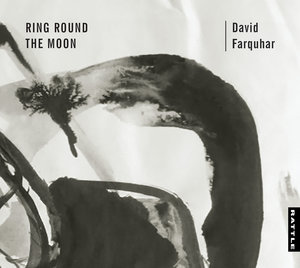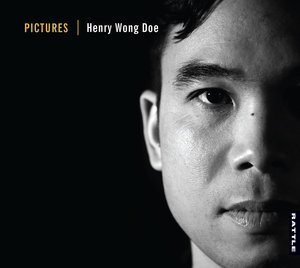Wellington City Orchestra presents:
CHABRIER – Espana
TURINA – Danzas Fantasticas
BIZET – Carmen Suite No. 1
RODRIGO – Concierto de Aranjuez
(Owen Moriarty – guitar)
BIZET – Carmen Suite No. 2
Wellington City Orchestra
Conductor – Ewan Clark
St.Andrew’s-on-The-Terrace, Wellington
Saturday, 16th September 2023
There were probably quite a number of people attending this concert who were in exactly my situation regarding our relationship with the music we were about to be served – the Chabrier, Bizet and Rodrigo Items I had heard many times before and knew reasonably well, but the Turina work, Danzas Fantasticas, never.
Audiences are more often than not disparate and largely unconnected fraternities, but here from the outset one sensed a kind of “anticipatory listening camaraderie” hovering about St.Andrew’s Church in view of the afternoon’s programme. I liked imagining that it promised both the pleasure of hearing so many well-known items, and the thrill of discovering and getting to know at least one work of Turina’s – whose title alone promised more of the same qualities as its companions in the programme.
Well, I can’t speak for my companions in the church this afternoon, but by the time the Danzas Fantasticas had strutted its stuff, I was flabbergasted! I kept on thinking, listening to conductor Ewan Clark’s expert “putting the players through their paces” reading of the work, why have I never before investigated this music ? What a peach of a work! I had actually heard of it (probably the only Turina work I could name if pressed to do so), but it didn’t for me provoke anything like the “instant recognition” that any of the other pieces on this afternoon’s listening menu did. It would therefore be fair to say than Joaquin Turina isn’t as yet a “single-work composer” in the popular regard of things, as one could say about Chabrier with his Espana” or Rodrigo with his “Concierto de Aranjuez” – and, in many people’s minds, perhaps even Bizet with his “Carmen”.
However, it wasn’t for me the only reason that this Wellington City Orchestra concert gave such particular pleasure on this occasion – though not yet entirely consistent in its responses to the demands of the music, I felt that the band under conductor Ewan Clark had captured the character of every piece we heard, from the vibrancy of rhythm and colour evident in Chabrier’s Espana” to the sheer variety of emotion and situation portrayed for us in Bizet’s music for his opera “Carmen”. A friend afterwards remarked upon the vividness of the playing’s recreation of the opera’s powerful atmosphere and intensely dramatic situations. And besides the vividness of Turina’s picture-postcard evocations of Spanish life, the playing of guitarist Owen Moriarty brought home to us the intensely-wrought emotion embedded in the famous “Aranjuez” Guitar Concerto, the orchestral response to the soloist’s and his heartfelt ruminations impressively of a piece with the music’s character and depth of feeling.
A few remarks regarding what I heard here and there in the music and its playing – at the very beginning of “Espana” there were a few tentative moments with the difficult syncopations between strings and wind (I played in this work once in my halcyon days as a percussionist, and remember never feeling entirely sure of what I was doing in relation to my fellow-musicians, including the conductor! – AND I also remember not being able to get Perry Como’s famous “Hot Diggety Dog” song out of my head for some time so I could properly concentrate on Chabrier!). Here, the introduction came together beautifully as the players overcame these uncertainties and started to develop the music’s engaging feeling of “schwung”, the piece’s occasional “rolling crescendi” also carrying us along with great exhilaration! Ewen Clark got a treasurable moment from the strings with a “comma” inserted at one point just before the players’ big-hearted taking-up of the juicy lyrical theme! – and I also liked the elan with which the brasses made their alternating calls just before the coda.
Next up was the Turina work, about which I must report that my anticipation was all the more whetted by the appearance on the platform at that point of a contrabassoon that seemed twice the size of the player who was carrying it! Despite my slight bewilderment at the programme note not being entirely “on the button” with its descriptions of the openings of each of the first two movements, I still thoroughly enjoyed the sounds that I heard! The first opened with mysterious string chordings, followed by a sudden irruption, stimulating rhythmic sequences of sounds by turns lively and sultry, with a lovely, romantic melody dug into by the strings varied by some beautiful lines from a cor anglais – then the strings returned with their mysterious opening chords before bidding us a kind of sweet and nostalgia-ridden series of “adios”. A bracing call to attention began the second movement, which then morphed into a more relaxed and somewhat angular 5/4 rhythm with beautiful writing for both strings and winds. Yes, the finale was indeed of a “lively and rhythmic character” – very Spanish, with the themes contrastingly sultry and charming, with an exciting coda, a brief cello solo, and a coruscating orchestral pay-off!
We then got the first of the two Carmen Suites from the opera, beginning most appropriately with the baleful “Fate” theme (which I recall never before hearing until I encounted the opera proper!) – great brass and lower strings here! The Aragonaise theme came next, delivered with great brilliance and atmosphere – it was followed by the beautiful “Intermezzo” a moment of flute-and-harp calm in the opera amidst a sea of troubles! Carmen’s tempting invitation to Don Jose, the Seguedille followed – after a slightly shaky start, oboe and strings nailed it! Les Dragons d’Aicala, Don Jose’s marching tune, featured both bassoon and clarinet in fine fettle, while the suite’s most popular number Les Toreadors made an excellent first-half concluding piece, not too rushed, but delivered with real swagger!
After the interval Owen Moriarty took the platform with his guitar, to perform the much-played but ever-enchanting “Concierto de Aranjuez” by Joaquin Rodrigo – this occasion was no exception, as the soloist despatched his part with a remarkable amalgam of spontaneity and fluency throughout – did the wind players occasionally get slightly ahead of the soloist at times when he seemed to “give space” in the turning of a phrase-end? – even if such was the case, no violence to any particular bar or phrase that I could pinpoint was enacted by any of the players in the making of this music! A deservedly-mentioned highlight of the performance was the playing by Rodney Ford of the cor anglais solo in the second movement, for which the latter received acknowledgement at the work’s end – the playing had a plangency I couldn’t remember being bettered in any previous performance I’d heard. In fact the “live” occasion gave the music an extra level of intensity throughout that made a huge difference to how one responded to the work as a whole, the occasion thus more deeply “touching” my sensibilities than has been usually the case with the music.
Nothing could have “rounded off” the concert better after this than the second of Bizet’s “Carmen” Suites – though Owen Moriarty did his best to help us return to our lives with an encore by a Serbian composer Miroslav Tadic – a most entertaining and vigorous piece called “Walk Dance”, which certainly “cleared the air” of any Iberian excess that may have hung around after the concerto’s final notes had died away. Then it was all orchestral hands on deck again for the Bizet, beginning this time with a more-than-usually circumspect piece for this opera, the Marche des Contrebandiers (Smugglers’ March), but whose relative unfamiliarity was made up for in spadefuls by the deservedly famous Habanera. Afterwards came some of the most beautiful music from the opera, that given to Micaela, Don Jose’s would-be sweetheart, in the throes of searching desperately for him in the mountains – lovely horn-playing, at first, followed by the solo violin with the melody, the Concertmaster Paula Carryer here doing an excellent job!
More familiar to those who hadn’t yet seen the opera would have been the following Chanson du Toreador (Song of the Toreador) expressing the necessary courage and bravado of Escamilo, the bullfighter, with solo trumpeter Neil Dodgson making a brilliant job of it, as do the brass in general in the following La Garde Montante (The Changing of the Guard) together with the winds, giving the scene plenty of ceremonial elan! Finally, we heard one of Bizet’s most exciting creations, the Danse Boheme, sung in the opera by Carmen and two of her gypsy cohorts in a vivid description of a wild and abandoned gypsy dance, Ewan Clark and the orchestra responding by pulling out all the stops, as they say in the classics, and bringing the concert to a suitably brilliant conclusion. We clapped and shouted our approval of it all, a great and deserved success for all concerned – well done on all counts to guitarist Owen Moriarty, to conductor Ewan Clark and to the stalwart players of the Wellington CIty Orchestra.

